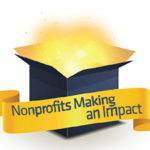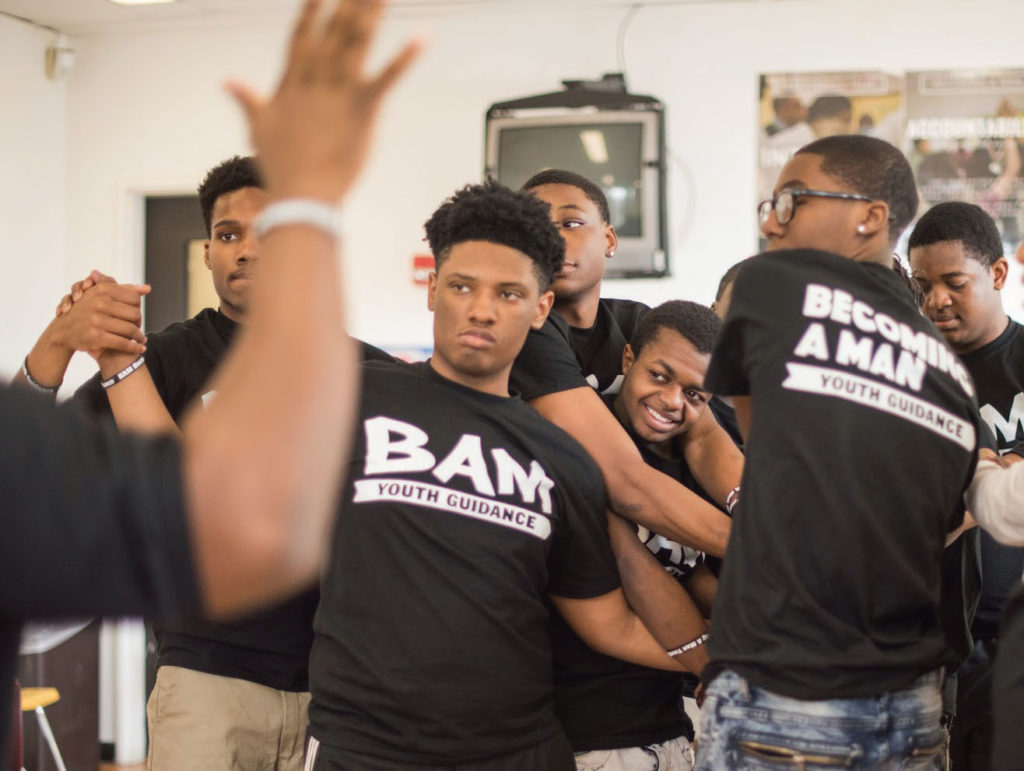
Adolescence is a time of both amazing potential and increased risk-taking. Young brains develop rapidly, learning new skills and preparing for adulthood. Peer relationships become more important, and some decisions become more consequential: whether to drop out of school, have unprotected sex, or experiment with drugs or crime. Helping adolescents make good decisions has an enormous impact on life trajectories. Here we profile two programs that target kids who are at elevated risk of making poor choices, given a history of family trauma, troubled academics or school behavior, and ubiquitous neighborhood violence.

What It Does
Youth Guidance’s Becoming A Man (BAM) and Working on Womanhood (WOW) programs work with small groups of 12 to 15 students in grades 7 through 12, to develop important decision-making skills, especially those related to issues such as violence, relationships, dropping out of high school, and criminal activity.
Since girls and boys often face different problems and deal with them differently, Youth Guidance runs separate programs for each gender. Both involve weekly small-group, interactive sessions during the school day that allow for individual mentoring, group exercises, and role play. It also gives students a chance to problem-solve with peers and a professional counselor in a non-judgmental setting. Collectively, BAM and WOW serve about 8,000 youth in 110 schools throughout Chicago and Boston.
How Effective Is It
An independent study of BAM showed large reductions in criminal activity and improved academic outcomes. Over a year-long period, BAM participants were 50% less likely to be arrested for a violent crime than students in a randomly-assigned comparison group. They were also 19% more likely to graduate high school on time and were about two months ahead of their peers in academic learning. Since incarceration is so expensive, the study estimated a social return of up to $30 for every $1 invested based on crime reduction alone. Increases in earnings and decreases in social service use that come with high school graduation would add to the return on investment.
An independent study of WOW is still in progress. Thus far, internal results are encouraging: About two-thirds of participants experienced a decrease in symptoms of depression within a year, with greater effects for the most severely depressed.
How You Can Help
Donors can help bring BAM and WOW to new school districts, support expansion within existing districts, or assist with ongoing implementation costs not covered by public funds (usually about 30%). When expanding to new sites or cities, most school districts will often not fund the program until it has been tested—that is, until year 2 or 3 of the program—relying instead on philanthropy to absorb the risk. Even when the program is established, philanthropy is still needed to cover costs such as training, hiring, and evaluation.
BAM and WOW cost about $2,300 per student for a year of the program, of which philanthropy covers about $700. Donors can sponsor new groups at an existing school; supporting a group of 12 to 15 kids costs about $10,000 per year. You can also help districts expand the program to a new school for about $25,000, or fund expansion to a new district for $115,000. To donate any amount, visit www.youth-guidance.org/how-to-give.
Personalize This Project
Other organizations with similar philosophies that seek to improve adolescent decision-making include Children’s Aid Society’s Carrera Program in New York. It works with adolescent girls to prevent pregnancy by building hope, confidence, academic and life skills. The Brotherhood/Sister Sol, also in New York, provides long-term support services for youth focusing on strengths, preparing for the future, and making sure they feel valued and loved.
